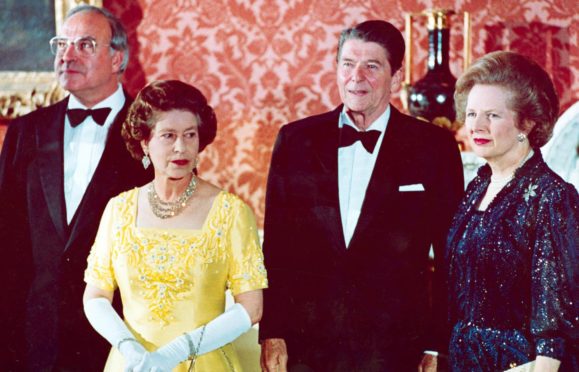There is a moment in the current series of the Crown, in which brisk, no-nonsense Margaret Thatcher, distraught at the fact that her “favourite” child, son Mark, is missing in the desert, breaks down during an audience with the Queen.
How mortifying, Thatcher says, that it should be the tears of a female Prime Minister that flow first in this hallowed room. Believe you me, says the Queen, she may be the first female Prime Minister in here – but she certainly isn’t the first to shed tears.
The scene encapsulated rather nicely the bizarre notion that in order to be powerful, women must pretend that they are just like men, because then they can pretend they are as powerful as men, who are – as the queen highlights – all pretending anyway. and that’s a lot of pretending, right there. The two most important people in the land, the sovereign and the prime minister, yet one feels compelled to be “professional” and conceal their maternal grief? Oh, what a tangled web we weave, right enough.
Tragic that the first female Prime Minster hindered rather than helped the cause of women. Thatcher’s Queen Bee syndrome – flock around me, boys – perpetrated a system in which women in authority so often behave like the current Home Secretary, Priti Patel: stomping about Whitehall in her four-inch stilettos kebabbing the necks of hapless civil servants and roaring that they are all “f’ing useless”.
Thatcher, you see, tells the queen – before she breaks down, obviously – that she’d rather not appoint women because they get too emotional. Unless, of course, it’s anger because that’s boy emotion and therefore justified, whereas girly emotion is tiresome and wrapped up in useless stuff like empathy. Under that system, the only women likely to get on are the ones who are better at pretending to be authoritarian jerks than their male counterparts.
An inquiry has found that Patel’s behaviour breached ministerial standards. But she didn’t lose her job. Does it matter? Of course it matters.
On the whole, the call for resignations in public life, the off-with-their-heads hysteria that follows genuine human error, has gone too far. But this is different. Workplace bullying is based on hierarchical assumptions about authority and value. I can talk to you whatever way I like because I am the boss and you are the underling. I have power and you do not. I am worth it and you are not.
Patel staying on sends out a damaging message. It says there is one law for the powerful and one for everyone else. How can it be credible to have laws governing workplace behaviour, but allow the lawmakers themselves to behave as they want? And how can it be credible for the perpetrator to stay while the adviser on ministerial standards resigns instead.
Is it that Patel can remain because…well come on boys, don’t be big girls’ blouses, she’s just a girl – how bad can a balling out be? Greater power should come with greater responsibility to behave in ways that do not demean – or worse, damage – those over whom you exercise it.
Patel said if she offended anyone, she didn’t mean to. Can you see that working for those without power? “I know I mugged an old lady, your honour, but I didn’t mean to upset her. I just wanted her fifty quid. Let me tell her I’m sorry and we’ll call it quits.” In my journalistic career, I have been loath to expose people’s frailties because we all have frailties. I made a couple of exceptions: a Catholic Cardinal and a workplace bully. The motivation each time? Challenging abuse of power.
Bullying is a playground word but the effects are serious. Gradually, victims become increasingly weak. They can’t eat, can’t sleep. They become depressed, anxious, even suicidal. But there is also insidious damage to society: it allows corruption to flourish.
Interestingly, Patel’s bullying behaviour has been dismissed by some. Plenty of men, they say, behave similarly in Whitehall without this fuss. Ah, the, “men do it, so it’s okay” rule. The gold standard. It is really not so much our behaviour as men and women that differs, as the societal interpretation of that behaviour. Perhaps it’s time for us all to be both more real and more responsible about our emotions.
Perhaps it’s also time men stopped feeling compelled to stomp around to show their strength – and women stopped feeling compelled to ape them.











